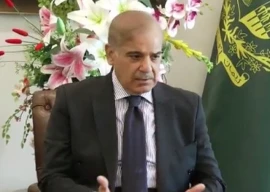
His story – of life in Karachi without secure employment, proper housing and lack of money – is similar to that told by many of the internally displaced people (IDPs) who moved to Karachi from Swat.
After the Taliban moved into Swat in 2003, thousands began fleeing the violence in the district. In 2009, over two million were displaced as a result of a full-fledged military operation.
According to the Awami National Party’s Secretary General in Sindh Amin Khattak, 40,000 IDPs from Swat came to Karachi, most of whom have left. “Thirty thousand were sent back by the government. People from Swat left quickly because their fruit crops were ready for harvesting. The remaining10,000 were well-off and could afford to travel back.” Others, however, feel that many IDPs have still not been able to return.
‘We had to leave’
“I worked as a tailor,” Rahim says, describing life in Matta, a town in Swat. “But business fell flat when the security situation worsened. There were so many checkpoints, set up by both the army and the Taliban, which we had to cross to get to the market. The electricity supply was also sporadic. Eventually we had to leave.”
The turning point for him was when the military began attacking Taliban hideouts. “There was a constant curfew,” he says. Thousands moved from Swat and Malakand to larger cities, but many are still struggling to establish a foothold.
“We moved to Karachi because this is the business hub of Pakistan. But our families can’t adjust,” Qasim says. “The food, water and air here are bad. The hot weather makes children break out. My family says that they want to go back to Swat.”
“I would go back,” Rahim says. “But to what? My house is intact but I can’t earn a living if the situation is unstable.”
The cost of moving back
While finding work in Karachi has been a challenge, a bigger one is making ends meet. While the IDPs initially relied on relatives settled in the city, many eventually found work. Most of them do odd jobs. But on an average salary of Rs6,000 – up to Rs2,500 of which goes to rent – they find it hard to pay for necessities, let alone be able to save money to return home.
Having spent all their resources to escape the fighting – many sold their wives’ jewellery to pay for the move – they have to once more scrape together funds to restart life in Swat. As for government compensation, even though they filled out registration forms, the IDPs have yet to see a cent of the Rs25,000 per affected household promised in 2009.
“Only those who have relatives living in the Gulf could afford to move back to Swat,” says Sajid who works in a factory.
The result is that many IDPs can’t afford to leave Karachi just yet. Memories of the Taliban’s brutal nature, fierce fighting between the armed forces and militants and loss of livelihood are still vivid. According to Bilal, who works in a school, several people underwent psychiatric treatment to deal with the trauma. Others are still reluctant to talk about the Taliban.
“You couldn’t defy them,” Sajid says. “Your head would be separated from your body, which would be found hanging upside down from a tree. They wouldn’t let us work or live, they had created an unimaginable environment of fear.”
While Karachi may have its own share of violence and economic problems, Swat’s IDPs feel that there are far fewer problems for them in the city than there would back home.
Even though the situation in Swat has stabilised, the IDPs say the Taliban still threaten their relatives and friends. Bilal says, “The Taliban commanders that the government claims are dead are alive; they call and say ‘we’re going to be back in power again’. They ask us why we support the government and the army.”
Names have been changed to protect privacy
Published in The Express Tribune, October 4th, 2010.























COMMENTS (1)
Comments are moderated and generally will be posted if they are on-topic and not abusive.
For more information, please see our Comments FAQ